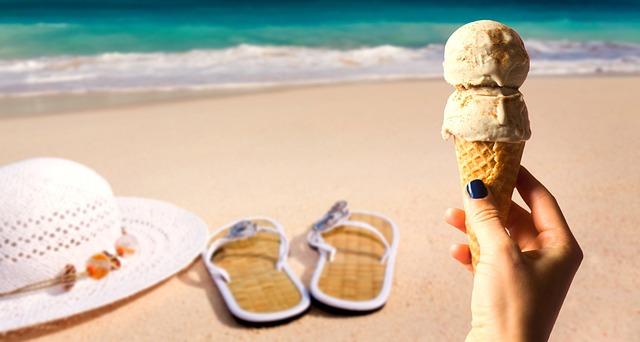How Many Pounds of Ice for Ice Bath: Calculating the Perfect Cold Ratio

Are you ready to take your post-workout recovery to the next level? Look no further than the ultimate cold therapy: the ice bath. But here’s the burning question: how many pounds of ice do you actually need for that perfect chill? We’ve got you covered. In this informative article, we’ll guide you through the precise calculations to determine the ideal cold ratio for your ice bath. So get ready to dive in and cool down like a pro. You’ll walk away with the confidence and knowledge to create a rejuvenating ice bath experience that will leave you feeling refreshed and ready to conquer your next workout. Let’s dive into the science, shall we?
Contents
- 1. Understanding the Purpose: What Is an Ice Bath and Why Is It Beneficial for Recovery?
- 2. Determining the Water-to-Ice Ratio: Finding the Perfect Balance for Effective Cold Therapy
- 3. Factors to Consider: How Body Weight, Water Temperature, and Desired Duration Impact Ice Bath Preparation
- 4. Calculating Ice Quantity: A Step-by-Step Guide to Ensure Optimal Cooling and Comfort
- 5. Ice Bath Accessibility: Exploring Alternative Options to Large Ice Cubes for Greater Convenience
- 6. Maximizing Efficiency: Strategies to Extend the Lifespan of Your Ice and Maintain Optimal Cold Temperature
- 7. Safety Precautions: Essential Tips to Avoid Hypothermia and Ensure a Safe Ice Bath Experience
- 8. Personalizing Your Ice Bath: Adjusting the Cold Ratio to Meet Individual Preferences and Sensitivities
- 9. Enhancing the Benefits: Mixing Ice Baths with Other Recovery Techniques for Superior Results
- 10. Fine-Tuning Your Technique: Expert Insights and Proven Methods to Optimize Ice Bath Performance
1. Understanding the Purpose: What Is an Ice Bath and Why Is It Beneficial for Recovery?
An ice bath is a popular recovery technique among athletes and individuals looking to soothe their muscles after intense workouts or competitions. Essentially, an ice bath involves immersing your body in cold water, typically for about 10 to 15 minutes. This drastic drop in temperature helps to reduce inflammation, alleviate pain, and enhance the overall recovery process.
But just how much ice should you use for an ice bath? The perfect cold ratio can vary depending on personal preference and the desired level of coldness. However, a general guideline is to use approximately 10 pounds of ice for every 10 gallons of water. This ratio ensures that the water temperature will drop sufficiently to provide the desired benefits without causing too much discomfort.
To calculate the ideal amount of ice for your ice bath, follow these simple steps:
-
Determine the size of your bathtub or container: Measure the length, width, and depth of your tub or container in inches.
-
Convert the measurements to gallons: Multiply the length, width, and depth measurements together and then divide the total by 231. This will give you the volume of your container in gallons.
- Calculate the amount of ice needed: Multiply the volume of your container by the recommended ice-to-water ratio of 1 pound of ice per gallon. This will give you the total weight of ice needed for your ice bath.
Remember, these calculations are just a guideline and can be adjusted based on personal preference and tolerance to cold. Experiment with different ice ratios to find the perfect balance of temperature and comfort for your ice bath recovery routine.
2. Determining the Water-to-Ice Ratio: Finding the Perfect Balance for Effective Cold Therapy
When it comes to cold therapy, finding the perfect balance between water and ice is crucial for maximum effectiveness. Determining the water-to-ice ratio can be challenging, as it depends on various factors such as the desired temperature, the size of the ice bath, and personal preference. However, with a few calculations, you can determine the optimal ratio that provides the perfect cold therapy experience.
Firstly, it’s important to consider the desired temperature for your cold therapy session. If you’re aiming for a lower temperature, you’ll need a higher ice-to-water ratio. Conversely, if you prefer a milder cold therapy experience, a lower ice-to-water ratio will suffice.
Next, take into account the size of your ice bath. For a smaller bath, a higher ice-to-water ratio is recommended to maintain the desired temperature. On the other hand, a larger bath may require a lower ice-to-water ratio, as the increased water volume will retain the coldness for a longer period of time.
To calculate the perfect cold ratio, you can follow these steps:
- Measure and note the size of your ice bath in gallons.
- Determine your desired temperature and convert it to Fahrenheit.
- Use the following formula to calculate the approximate amount of ice needed:
| Water Temperature | Ice Ratio |
|---|---|
| 50°F – 59°F | 1:1 |
| 60°F – 69°F | 1:2 |
| 70°F – 79°F | 1:3 |
| 80°F – 89°F | 1:4 |
By following this table, simply multiply the size of your ice bath by the ice ratio corresponding to your desired water temperature. This will give you an estimate of the amount of ice needed for your cold therapy session.
Remember, these ratios are just guidelines, and you can adjust them based on personal preference. Experimenting with different ratios can help you find the perfect balance that provides the most effective cold therapy experience for your needs.
3. Factors to Consider: How Body Weight, Water Temperature, and Desired Duration Impact Ice Bath Preparation
When preparing for an ice bath, there are several factors that you should take into consideration to ensure the optimal experience. Body weight, water temperature, and desired duration all play a crucial role in determining the amount of ice that you will need. Let’s break down each of these factors and understand their impact on ice bath preparation.
-
Body weight: Your body weight plays a significant role in determining the amount of ice required for an effective ice bath. Generally, it is recommended to use a ratio of one pound of ice per ten pounds of body weight. For example, if you weigh 150 pounds, you should aim for approximately 15 pounds of ice. This ratio ensures that the cold temperature is efficiently distributed and provides an effective cooling effect on your body.
-
Water temperature: The temperature of the water used in an ice bath is another crucial factor to consider. It is recommended to use water at a temperature between 50°F to 59°F (10°C to 15°C). This range allows for better shock absorption and improved circulation during the ice bath. Combining the right water temperature with the appropriate amount of ice will provide you with a comfortable and effective experience.
- Desired duration: The duration of your ice bath is a personal preference and can vary depending on your fitness goals and tolerance level. It is generally recommended to start with shorter durations, such as 5-10 minutes, and gradually increase as your body adapts to the cold. During longer ice baths, it is important to have additional ice on hand to maintain the desired temperature. Having a clear understanding of your desired duration will help you calculate the amount of ice you need accurately.
By considering factors like body weight, water temperature, and desired duration, you can calculate the perfect amount of ice for your ice bath. Remember to listen to your body and adjust these factors as needed to ensure a safe and enjoyable experience. Stay cool, both physically and mentally!
4. Calculating Ice Quantity: A Step-by-Step Guide to Ensure Optimal Cooling and Comfort
When it comes to creating the perfect ice bath, achieving the right cold ratio is key. The amount of ice you use will directly impact the effectiveness of the cooling process and the comfort level experienced by the individual. To help you calculate how many pounds of ice you need for an ice bath, we have put together this step-by-step guide.
1. Determine the desired temperature: Start by deciding on the temperature you want to achieve in your ice bath. This will depend on the purpose of the bath, whether it’s for athletic recovery, muscle relaxation, or cold therapy. For most applications, a temperature range of 50-60 degrees Fahrenheit (10-15 degrees Celsius) is recommended.
2. Calculate the water volume: Next, measure the volume of water you will be using in your ice bath. This can be done by filling up the bath or container with water and noting the volume in liters or gallons.
3. Find the ice-to-water ratio: The ideal ice-to-water ratio for an ice bath is approximately 1:1. This means that for every liter or gallon of water, you should add an equal amount of ice in weight. For example, if you have 10 liters of water, you will need 10 pounds of ice. Adjust this ratio based on personal preference and the desired temperature.
To summarize, calculating the ice quantity for an ice bath involves determining the desired temperature, measuring the water volume, and using a 1:1 ice-to-water ratio. By following this step-by-step guide, you can ensure optimal cooling and comfort during your ice bath experience.
5. Ice Bath Accessibility: Exploring Alternative Options to Large Ice Cubes for Greater Convenience
Ice baths are a popular choice for post-workout recovery, but the hassle of dealing with large ice cubes can deter many individuals from enjoying the benefits. Fortunately, there are alternative options available that can provide the same icy cold sensation without the inconvenience. In this post, we will explore these alternatives, allowing you to experience the rejuvenating effects of an ice bath with greater convenience.
1. Ice Packs: Ice packs are a convenient option for those seeking a quick and easy ice bath experience. Simply place the ice pack in the water and let it cool down the temperature to create a refreshing, cold environment for your muscles. They come in various sizes and shapes, making it easy to customize the cold ratio to your liking.
2. Ice Bags: Similar to ice packs, ice bags offer a portable and effortless way to enjoy an ice bath. They are filled with small ice cubes or crushed ice, providing a consistent cold temperature throughout the bath. Ice bags are particularly suitable for targeted cold therapy as you can easily apply them to specific areas of your body, such as sore muscles or joints.
3. Ice Bath Machines: For those seeking a more advanced option, ice bath machines are becoming increasingly popular. These machines are specifically designed to generate icy cold water rapidly, eliminating the need for manual ice cube preparation. With adjustable temperature controls, you can create the perfect cold ratio for an optimal recovery experience.
With these alternative options, you no longer have to worry about the hassle of large ice cubes when it comes to enjoying the benefits of an ice bath. Experiment with different methods to find the one that best suits your needs and preferences. Whether you choose ice packs, ice bags, or an ice bath machine, achieving the perfect cold ratio for your post-workout recovery has never been easier. So go ahead, give it a try, and treat your body to the rejuvenating powers of an ice bath.
6. Maximizing Efficiency: Strategies to Extend the Lifespan of Your Ice and Maintain Optimal Cold Temperature
When it comes to maximizing efficiency and extending the lifespan of your ice, there are several strategies you can implement to maintain optimal cold temperature. By following these tactics, you can ensure that your ice remains colder for longer, allowing you to take advantage of its benefits.
One effective strategy is to properly insulate your ice. This can be achieved by storing it in a well-insulated cooler or container, such as a high-quality ice bath tub or a foam cooler. Insulation helps minimize heat transfer, keeping the cold temperature isolated within the ice for an extended period of time.
Another method to maximize ice efficiency is to regularly check and seal any cracks or gaps in your ice bath. These small openings can result in heat infiltration, causing your ice to melt faster. A simple solution is to use waterproof tape or sealant to secure any leaks, ensuring that the cold temperature remains constant.
Moreover, maintaining the perfect cold ratio is crucial for optimal results when using an ice bath. Calculating the correct amount of ice required for your desired temperature is essential. As a general guideline, a ratio of about 1 pound of ice per gallon of water is commonly used. However, this can vary depending on factors such as room temperature, desired coldness, and duration of use. Experimenting with different ratios can help you find the perfect balance for your specific needs.
To summarize, by implementing effective insulation, sealing potential leaks, and finding the ideal cold ratio, you can maximize the efficiency of your ice, extend its lifespan, and maintain an optimal cold temperature for your ice bath. These strategies will help you make the most out of your ice and enhance your overall experience.
7. Safety Precautions: Essential Tips to Avoid Hypothermia and Ensure a Safe Ice Bath Experience
Before you dive into the invigorating world of ice baths, it’s crucial to understand the safety precautions that will help you reap the amazing benefits while keeping hypothermia at bay. Here are some essential tips to ensure a safe and enjoyable ice bath experience:
- Start Slow: If you’re new to ice baths, it’s important to gradually acclimate your body to the cold. Begin with shorter durations, like 2-5 minutes, and gradually increase as you feel comfortable.
- Dress Appropriately: Wear a swimsuit or lightweight clothing to prevent additional resistance in the water. Avoid anything heavy or constricting that could hinder movement or circulation.
- Use the Buddy System: Have a friend or family member present during your ice bath sessions. They can monitor your well-being, ensure your safety, and offer assistance if needed.
- Know When to Stop: Listen to your body. If you start shivering uncontrollably, feel confused or disoriented, or experience any unusual discomfort, it’s time to end the ice bath and warm up.
Remember, your safety always comes first. By following these precautions, you can harness the power of cold therapy while minimizing the risk of hypothermia or any potential adverse effects. Enjoy the refreshing and revitalizing benefits of ice baths, but always prioritize your well-being!
8. Personalizing Your Ice Bath: Adjusting the Cold Ratio to Meet Individual Preferences and Sensitivities
In the world of ice baths, personalization is key. Each individual has their own preferences and sensitivities when it comes to cold therapy. Adjusting the cold ratio in your ice bath can make all the difference in ensuring a comfortable and effective experience.
When determining how many pounds of ice to use in your ice bath, it’s important to consider factors such as the size of your tub, the ambient temperature, and your personal tolerance for cold. A general rule of thumb is to start with 1-2 pounds of ice per gallon of water. This will provide a good balance of cold without being too overwhelming.
However, it’s important to remember that this is just a starting point. You may find that you prefer a colder or milder experience, and that’s perfectly fine. Experiment with different ratios and find what works best for you. Remember, the goal is to challenge yourself without causing extreme discomfort or pain.
If you’re unsure where to begin, here are some guidelines to help you personalize your ice bath:
1. Start with 1 pound of ice per gallon of water and gradually increase or decrease the amount based on your comfort level.
2. Pay attention to your body’s response. If you feel excessively cold or start shivering uncontrollably, it may be a sign to decrease the cold ratio.
3. Conversely, if you don’t feel much of an effect, you may want to add more ice to intensify the cold.
4. Consider adding additional elements like Epsom salt or essential oils to enhance your ice bath experience.
Remember, everyone is different, and what works for one person may not work for another. Take the time to experiment and find the perfect cold ratio that suits your individual preferences and sensitivities. Happy icing!
9. Enhancing the Benefits: Mixing Ice Baths with Other Recovery Techniques for Superior Results
Ice baths are a popular recovery technique for athletes looking to enhance their performance and decrease muscle soreness. But did you know that you can take your ice bath to the next level by combining it with other recovery techniques? By mixing ice baths with other methods, you can achieve superior results and optimize your body’s recovery process.
One way to enhance the benefits of an ice bath is to incorporate contrast therapy. This involves alternating between cold and hot treatments to stimulate blood circulation and promote muscle recovery. After finishing your ice bath, take a warm shower or soak in a hot tub for a few minutes. This will help increase blood flow to your muscles and aid in the removal of waste products like lactic acid. Alternate between hot and cold treatments 2-3 times for the best results.
Another recovery technique to consider is stretching. After your ice bath, perform gentle stretching exercises to improve flexibility and release any tension in your muscles. Stretching not only helps prevent injuries but also aids in the recovery process by increasing blood flow to your muscles and reducing muscle stiffness. Aim to hold each stretch for 20-30 seconds and focus on the major muscle groups used during your workout.
Lastly, consider incorporating foam rolling into your post-ice bath routine. Foam rolling is a self-massage technique that helps release muscle knots and improve tissue mobility. It can be used on various muscle groups, such as the calves, quads, and hamstrings. Spend a few minutes foam rolling each muscle group, applying moderate pressure and focusing on any tight or sore areas. This will further aid in your recovery by breaking up adhesions and increasing blood flow to your muscles.
By combining ice baths with contrast therapy, stretching, and foam rolling, you can maximize the benefits of your recovery routine. Experiment with these techniques and find the perfect combination that works for you. Remember to listen to your body and adjust the intensity and duration of each method accordingly. With a well-rounded recovery approach, you’ll be able to bounce back faster and perform at your best in no time.
10. Fine-Tuning Your Technique: Expert Insights and Proven Methods to Optimize Ice Bath Performance
When it comes to optimizing your ice bath performance, getting the perfect cold ratio is crucial. Understanding how many pounds of ice to use can make all the difference in reaping the full benefits of this recovery technique.
Calculating the ideal ice to water ratio depends on several factors, including your personal preference, the desired temperature, and the size of your tub or container. As a general guideline, a good starting point is using one or two pounds of ice per gallon of water. This will provide a refreshing chill without overwhelming the bath.
To fine-tune your technique, consider experimenting with different ratios to find what works best for you. Keep in mind that the colder the water, the more effective the ice bath will be. However, it’s essential to listen to your body and adjust accordingly. Adding too much ice can be uncomfortably cold and potentially cause harm.
Pro tip: If you’re looking for a quick and easy way to calculate the amount of ice needed, use the following table as a reference based on typical tub sizes:
| Tub Size | Ice Amount |
|---|---|
| Small (10-15 gallons) | 10-20 pounds |
| Medium (15-25 gallons) | 20-30 pounds |
| Large (25-40 gallons) | 30-40 pounds |
Remember, these are just guidelines to get you started. Feel free to adjust based on your preferences. Finally, make sure to monitor your body’s response during the ice bath and consult with a professional if you have any concerns or pre-existing conditions.
In conclusion, calculating the perfect cold ratio for an ice bath might seem like a daunting task, but with a little knowledge and some simple calculations, you can easily achieve the optimal chilling effect. By considering factors such as water temperature, desired bath temperature, and the amount of water in your tub, you can determine how many pounds of ice you need for the ultimate cold therapy session. Remember to adjust your calculations based on personal preference and tolerance, as everyone’s ideal ice bath experience may vary. So, whether you’re a dedicated athlete looking for post-workout recovery or simply seeking a refreshing plunge, armed with this newfound knowledge, you’ll be able to take your ice bath game to the next level. Happy chilling!
















